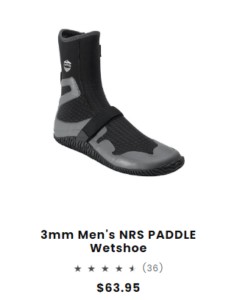Your Top Wetsuit Questions Answered: Part III
Paige Troiano November 3rd, 2016 Posted In: FAQs, How-To

Lindsay Fiedler, Triathlon 2016
For our third FAQ segment, we sat down with Wetsuit Wearhouse customer service rep and triathlete Lindsay Fiedler (aka Fiedsey) to answer another round of your most frequently asked wetsuit questions! This Jane-of-all-trades grew up here in Maryland on the Potomac River and spends her time kayaking, wakeboarding, boating and swimming competitively in open-water swims.
Which wetsuit for open water swimming?
Triathlon wetsuits are better suited for open water swimming. I recommend them for their flexibility and because the rubber coating really helps you to glide on the water and prevents water absorption, as opposed to a general watersport wetsuit. The added buoyancy that comes with wearing a triathlon wetsuit should also help to increase your swim-time! Triathlon wetsuits come in full-sleeve or sleeveless.
When is a wetsuit needed?
To determine when a wetsuit is needed, it’s dependent upon the individual. Some people tolerate cold water better than others, so if you notice that you’re starting to get chilly, I would recommend a wetsuit. However, and as a rule of thumb, you don’t want to get hypothermia, but you also don’t want to overheat in a wetsuit, which is possible, so it’s vital to pay attention to both. Remember you can always work with a combination of wetsuit tops and bottoms! This coverage will help prevent windchill and will provide protection against harmful UV rays and abrasion!
How much are wetsuit rentals?
You can rent a John or a Full Triathlon Suit at Wetsuit Wearhouse at a standard rental fee of $50.00! Check out our blog on Triathlon Wetsuit Rentals and see our Rental Policy as well!
Why wear a wetsuit in warm water?
Once again, when the water is this warm, you want to be careful to not overheat or become dehydrated. The thinner the neoprene on a wetsuit for this water temperature is ideal!
Why wash a wetsuit?
If you swim in a chlorinated pool, it’s important to wash a wetsuit to keep your wetsuit protected from chemicals that can damage the neoprene of your suit. Even if you’re active in salt water or fresh water, there’s always bacteria that can build up and cause your wetsuit to smell after a while. And the inevitable, urine. Everyone pees in their wetsuit, it’s okay! To prolong the life of your wetsuit, you want to take care of it as best as you can. We sell a few great wetsuit care products that are crucial for suit care and repair!
Where to store a wetsuit?
I recommend storing your dry wetsuit in a cool area without direct sunlight. I store mine in my closet on a flexible wetsuit hanger. Thicker wetsuits might take longer to dry, but some wetsuits have newer technology that allows them to dry faster, like RipCurl’s FLASH BOMB line. Make sure your wetsuit is dry before you put it away for storage! Also, it’s important to remember not to keep your wetsuit in your hot car.
Which wetsuit for kayaking?
 For kayaking or any paddle sport, I recommend a wetsuit that is 100% stretch. This is going to give you the most flexibility you need in your arms and shoulders. You can either go with a full wetsuit or a Farmer John style. I prefer a John, if it’s a nice day out, you don’t necessarily need coverage on your arms, but you have the option of layering and throwing a wetsuit jacket on over top. I also like wearing wetsuit boots while I kayak. This helps too with getting in and out of your kayak and potentially stepping on rocks and glass. Check the water temperature though, as this will help determine the thickness of boots you might need (for example, a 3mm or a 5mm wetsuit boot)! I really like the NRS Booties that zip; they’re super easy to get on and off and do a great job at keeping your feet toasty!
For kayaking or any paddle sport, I recommend a wetsuit that is 100% stretch. This is going to give you the most flexibility you need in your arms and shoulders. You can either go with a full wetsuit or a Farmer John style. I prefer a John, if it’s a nice day out, you don’t necessarily need coverage on your arms, but you have the option of layering and throwing a wetsuit jacket on over top. I also like wearing wetsuit boots while I kayak. This helps too with getting in and out of your kayak and potentially stepping on rocks and glass. Check the water temperature though, as this will help determine the thickness of boots you might need (for example, a 3mm or a 5mm wetsuit boot)! I really like the NRS Booties that zip; they’re super easy to get on and off and do a great job at keeping your feet toasty!
When is a wetsuit too small?
A wetsuit is too small if it’s restricting your breathing or restricts your range of motion in your arms and legs. Some helpful tips would be to measure your chest/bust, waist, and know your height and weight. Have a friend help measure you if you need! Keep in mind that when sizing, your chest measurement is the most imperative measurement! Wetsuits are intended to fit tightly like a second skin. Check out our blog on How To Choose a Wetsuit Size to make sure that your sizing is correct so that you can get the most out of your wetsuit!
How should wetsuit boots fit?
Wetsuit Boots should fit very snug. Contrary to popular belief, you don’t want them to fit like a pair of sneakers. They should fit a bit tighter than a sneaker, so that you can feel the top of your toe hugging the inside of the boot. If there’s too much room, the boots will swell up with cold water and this defeats the purpose of wearing them. The difference between a wetsuit boot and a wetsuit sock is the sole. Boots will have the hard sole that gives you more traction. Because of this, if you’re swimming, I would stick with a wetsuit sock so that you don’t get weighed down. For paddle sports or kayaking, go with boots for added traction.
What are wetsuit thicknesses?
Wetsuit thickness is the thickness of the neoprene (in millimeters) that the wetsuit is made of. The higher the number, the thicker the wetsuit = the warmer the wetsuit!!
*Editors Note: This post was reviewed and updated 8/23


Thank you for the recommendation. I love the way you guide your reader. Thank you for sharing.